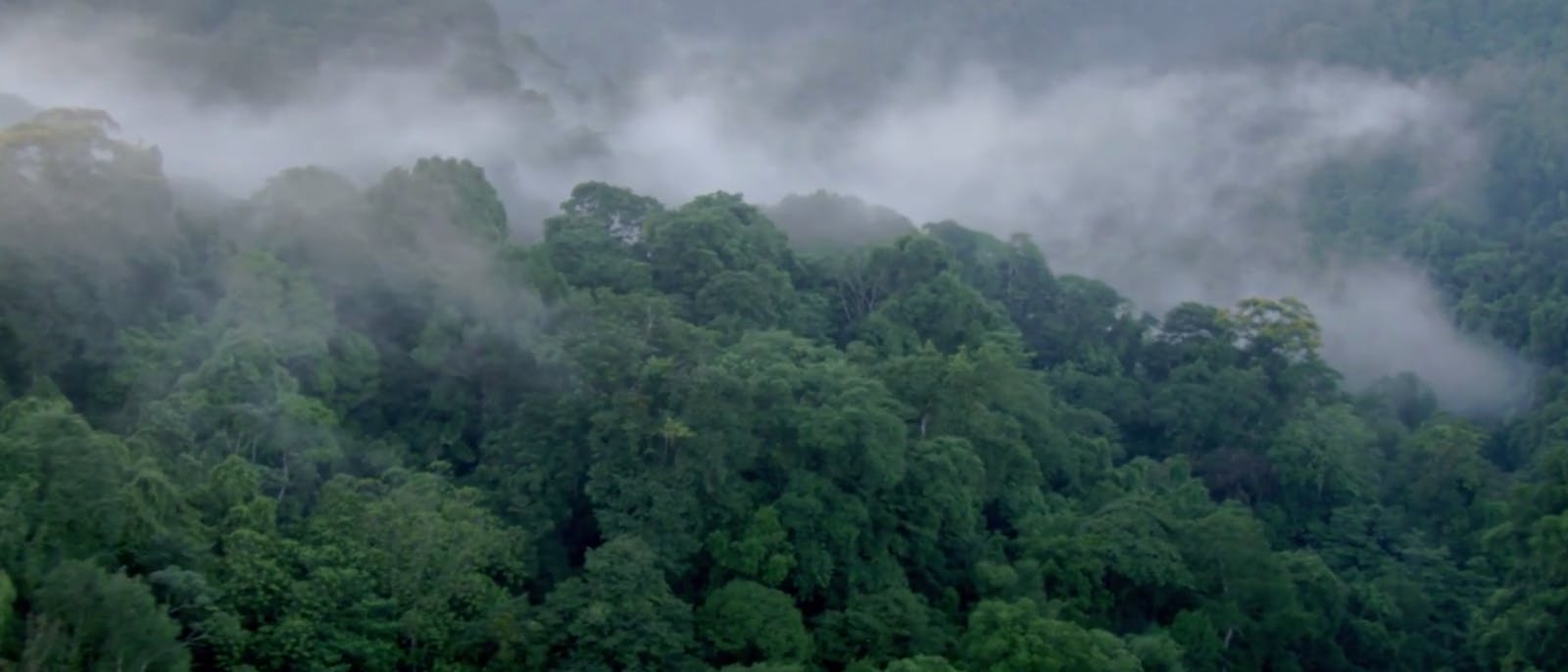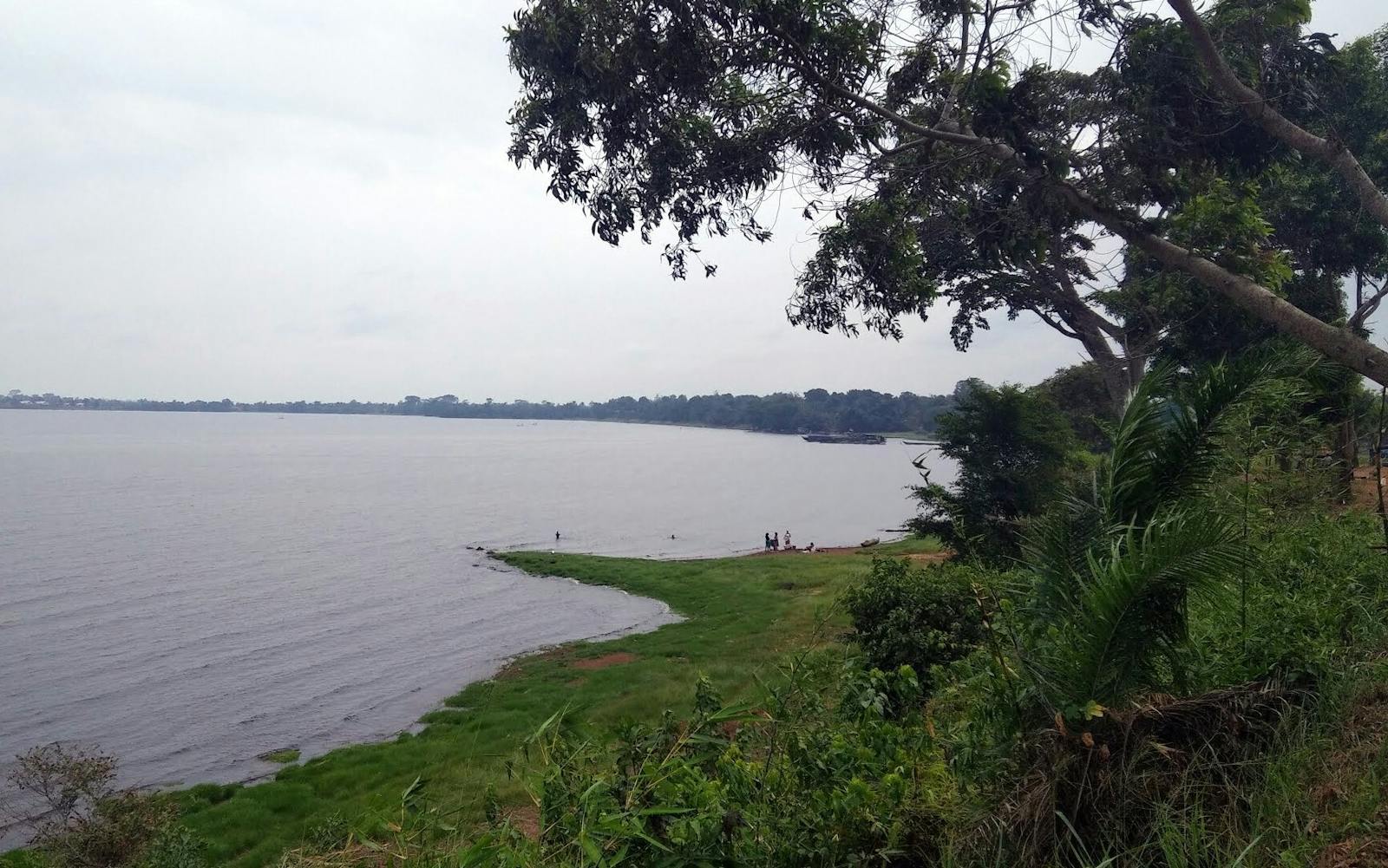Eastern Congolian Swamp Forests
The ecoregion’s land area is provided in units of 1,000 hectares. The protection goal is the Global Safety Net (GSN1) area for the given ecoregion. The protection level indicates the percentage of the GSN goal that is currently protected on a scale of 0-10.
Bioregion: Central Congolian Tropical Forests (AT14)
Realm: Afrotropics
Ecoregion Size (1000 ha):
9,294
Ecoregion ID:
10
Conservation Target:
89%
Protection Level:
3
States: Democratic Republic of the Congo, Republic of Congo
This ecoregion, combined with the neighboring Western Congolian Swamp Forests, comprises one of the largest swamp forests in the world. Although the entire swamp forest is floristically similar, it was separated into an eastern and western section based on the significant ecological barrier that the Congo River presents to non-flying vertebrates, particularly primates. For example, the bonobo is absent on the right bank of the Congo River.
%20resting%20on%20a%20branch.%20Image%20credit%20%C2%A9%20Kilmermedia%20%7C%20Dreamstime.jpg)
The Allen's swamp monkey (Allenopithecus nigroviridis) is the flagship species of the Eastern Congolian Swamp Forests ecoregion. Image credit: © Kilmermedia | Dreamstime
The Swamp Forests are located on the left bank (facing downriver) of the Congo River and its tributaries, forming a broad arc across the central portion of the Congo Basin. This ecoregion is predominantly flat and lies within the wet tropics, with average annual rainfall exceeding 2,000 mm and mean maximum temperatures above 30ºC. Minimum temperatures typically range between 18 and 21ºC. Central Africa, particularly the Democratic Republic of the Congo (DRC), experiences the highest concentrations of lightning observed on Earth, a phenomenon expected to intensify with climate change.
These swamp forests contribute to regional humidity, which fuels lightning activity, thunderstorms, and convective rainfall. The soils are primarily gleysols, reflecting the significant waterlogging the region undergoes annually.
The vegetation in this ecoregion is a mosaic of open water, swamp forest, seasonally flooded forest, dryland forest, and seasonally inundated savannas, all influenced by the seasonal flooding of the Congo River and its major tributaries. The seasonally flooded swamp forests are home to species such as *Guibourtia demeusei*, *Mitragyna spp.*, *Symphonia globulifera*, *Entandrophragma palustre*, *Uapaca heudelotii*, *Sterculia subviolacea*, and *Alstonia congensis*. The permanently flooded areas feature monospecific stands of Raffia palm, while open spaces support giant ground orchids, and riverbanks are often fringed with arrowroot.
These forests are classified as Guineo-Congolian swamp and riparian forests, part of the Guineo-Congolian regional center of endemism. The flora and fauna of this ecoregion are moderately species-rich, though there are few endemic species. The vegetation shares traits with both the Western Congolian Swamp Forests to the northwest and the Central Congolian Lowland Forests to the south.
Among mammals, there is one strictly endemic rodent species, Muton's soft-furred mouse. The bird population exhibits moderate richness, though no known species are endemic. Notable Congo forest-restricted bird species found here include the Congo sunbird, African river martin, and Congo martin. Several amphibians and reptiles are near-endemic, but only one, the tiny wax frog, is exclusively endemic.
The Congo River acts as a significant biogeographic barrier, restricting the dispersion of many species, most notably primates. For example, species such as the Angolan colobus, Wolf’s guenon, bonobo, golden-bellied mangabey, and northern black mangabey are found only on the left bank. In contrast, the crowned guenon, chimpanzee, and grey-cheeked mangabey are confined to the right bank.
Allen’s swamp monkey, a small, stout, and highly social primate with brown, gray, and green fur, inhabits both sides of the Congo River. This species prefers swamp forests but is often hunted for bushmeat or captured for the pet trade.
It is estimated that 124,000 km² of swamp forests remain in the Congo Basin, with approximately half located in this ecoregion. Portions of Lomami National Park and Salonga National Park lie within its boundaries, alongside vast areas of the Tumba-Lediima Nature Reserve (7,412 km²) and the Tumba-Ngiri-Maindombe Ramsar Site, a Wetland of International Importance (65,696 km²).
Human population densities are concentrated in villages along major river systems, averaging around 12 people per km². Logging and associated poaching pose the greatest threats in this ecoregion due to the ease of access provided by the navigable waterways of the Congo River and its tributaries. Logging is actively taking place within the Tumba-Lediima Nature Reserve.
Larger species are hunted for bushmeat, while elephants are targeted for ivory and meat, and bonobos are hunted for their meat, believed magical properties, and the pet trade. The poaching of African forest elephants in the DRC remains rampant and is carried out by professional, well-organized groups. Anecdotal evidence suggests that elephants have already been hunted out of large areas.
Priority conservation actions for the next decade
- Incorporate local communities’ knowledge, livelihoods, participation, and land rights into conservation management.
- Facilitate a decreased demand and consumption of illegal products from the forests in wider society.
- Encourage alternative livelihood opportunities that maintain tradition and culture.
-
-
1. Protected Planet. 2018. World Database of Protected Areas (WDPA). [Online]. [Accessed 16 January 2018]. Available from:
2. Rainforest Foundation UK. 2016. Protected areas in the Congo basin: Failing both people and biodiversity? [Online]. [Accessed 16 January 2018]. Available from: http://blog.mappingforrights.org/wp-content/uploads/38342-Rainforest-Foundation-Conservation-Study-Web-ready.pdf
3. Maley, J., Doumenge, C., Giresse, P., Mahé, G., Philippon, N., Hubau, W., Lokonda, M.O., Tshibamba, J.M. and Chepstow-Lusty, A. 2017. Late Holocene forest contraction and fragmentation in central Africa. Quaternary Research. pp.1-17. -
Cite this page: Eastern Congolian Swamp Forests. Ecoregion Snapshots: Descriptive Abstracts of the Terrestrial Ecoregions of the World, 2021. Developed by One Earth and RESOLVE. https://www.oneearth.org/ecoregions/eastern-congolian-swamp-forests/
-





